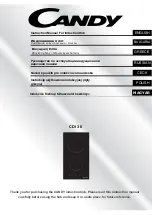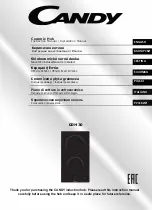
4.1 Cooking Tips
When food comes to the boil, reduce the temperature setting.
Using a lid will reduce cooking times and save energy by retaining
the heat.
Minimize the amount of liquid or fat to reduce cooking times.
Start cooking on a high setting and reduce the setting when the food
has heated through.
4.1.1
Simmering, cooking rice
Simmering occurs below boiling point, at around 85˚C, when
bubbles are just rising occasionally to the surface of the cooking
liquid. It is the key to delicious soups and tender stews because the
flavours develop without overcooking the food. You should also cook
egg-based and flour thickened sauces below boiling point.
Some tasks, including cooking rice by the absorption method, may
require a setting higher than the lowest setting to ensure the food is
cooked properly in the time recommended.
4.1.2
Searing steak
Stand the meat at room temperature for about 20 minutes before
cooking.
Heat up a heavy-based frying pan.
Brush both sides of the steak with oil. Drizzle a small amount of oil
into the hot pan and then lower the meat onto the hot pan.
Turn the steak only once during cooking. The exact cooking time will
depend on the thickness of the steak and how cooked you want it.
Times may vary from about 2 – 8 minutes per side. Press the steak
to gauge how cooked it is – the firmer it feels the more ‘well done’ it
will be.
Leave the steak to rest on a warm plate for a few minutes to allow it
to relax and become tender before serving.
4.1.3
S
tir-frying
Choose an induction compatible flat-based wok or a large frying pan.
Have all the ingredients and equipment ready. Stir-frying should be
quick. If cooking large quantities, cook the food in several smaller
batches.
19
V.2
Summary of Contents for EMIH320-3FI
Page 138: ...Visítanos en www easelectric es ...
















































